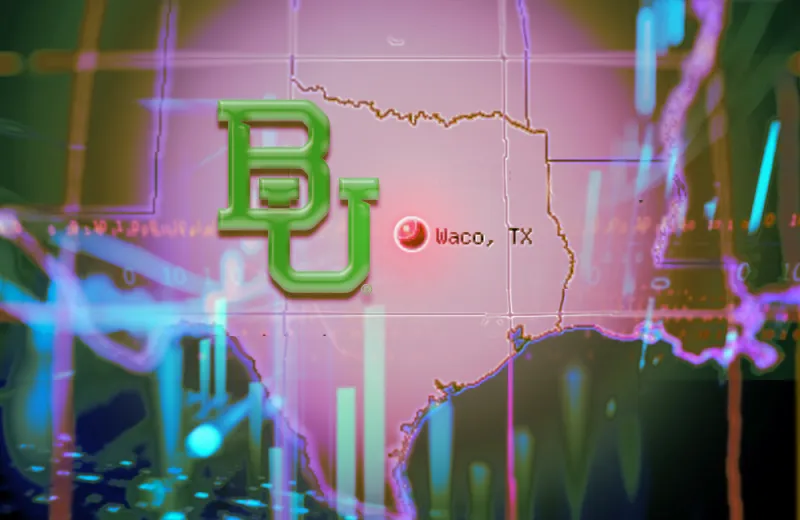When Baylor University endowment’s newest analyst has a question, the rest of her teammates drop everything to get her an answer.
Chief investment officer David Morehead thinks that this is the only way he can get early-career employees up to speed — and to contribute to a small team as much as they can — as soon as they can.
By the numbers alone, it’s clearly bearing fruit: The $2 billion endowment has posted a 10.9 percent annualized five-year return, trouncing every Ivy League endowment, aside from Brown University.
“I tell my team that under no circumstances should an analyst be waiting to have a question answered because that's holding them up from learning the next thing,” he said. “You can go back to doing your spreadsheet, but this person is sort of behind the eight ball because they don't know the different ways that a private equity firm can exit an investment.”
Morehead’s approach to talent management is borne out of necessity. Attracting employees, particularly mid-career managing directors to Waco, Texas isn’t exactly easy. And keeping folks around is even more challenging.
Yet those are key factors for outperformance. Morehead notes that both academic work and anecdotal evidence show that consistency in teams leads to better investment outcomes. “It takes a long time to turn around a team,” he said. “Every time you make a change with leadership or direction, some aspect of that is going to be happening. Well, that's like friction to the returns that you're generating from that portfolio.”
It’s a problem that a lot of endowment CIOs outside of major U.S. cities — or hell, even outside of the coasts — have. “If I was in Boston, I could go out and recruit mid-career individuals to come work at whichever of those endowments are there,” Morehead said. “Boston is a vibrant big city with sports teams and everything that anybody could avail themselves of.”
Waco is different. The town’s population is less than 150,000, and the nearest major city is 100 miles away. Morehead isn’t a Waco native — the former investment researcher and securities trader spent the bulk of his career in and around Chicago before heading down south. Morehead hears that even in Fort Worth, asset owners have trouble recruiting talent. Ever analytical, he looked at the numbers.
Baylor graduates some 3,500 students annually, 25 percent of which are in the business school. These students, as Morehead puts it, self-selected Baylor, so they’re more likely to stick around. Among the 800 or 850 annual graduates, there’s bound to be endowment management material — Morehead’s team just has to train them from the ground up.
The endowment’s latest hire, Kailey Ransom, joined in August. Morehead and his team have been working to pour all their knowledge into her, as quickly as possible. She’s studying for the CFA, attending the classes Morehead teaches at the university, and traveling to manager meetings and conferences as frequently as she can. She also helps her team members bring their interns up to speed. Morehead wants his team members to pass the CFA exams and obtain MBAs after they join.
“You be a sponge, soak up everything, and we will come at this issue of developing you from every conceivable angle that we can think of,” Morehead said. “I would argue, I think this is actually true, that the analysts that come into our office learn faster than at any other endowment.”
Soon after she joined, Ransom was on the road with her colleagues, managing director of investments Renee Hanna, director of investments Jin Dingmore, and senior analyst Maggie Woodhill. According to Ransom, these trips helped her contextualize Baylor’s place in the broader ecosystem, figuring out how and why they do things differently than their peers.
“Being exposed to all of that really early I think has been really helpful,” she said. “I think being able to couple my interactions and experience in the office with going to AGMs or conferences and meeting people has me asking questions that I wouldn't be asking if I was only in the office for the first three years.”
While this approach has been beneficial to the endowment early on — Ransom is a fast learner and has already been able to assist with some of the work — Morehead is playing the long game with his talent development project. “You can develop a lot of loyalty by going out of your way for somebody, giving them responsibility for something, and trusting them,” he said.
He has deliberately set up his team so that there’s an age gap between each of the new hires he brings in. This structure gives each team member room to grow, and by design, gives way to clear succession planning. Morehead expects to hand over the reins to Hanna at some point, and so on, creating a self-sustaining investment office for the university.
This is something of a rarity in the endowment world, where recruiters poach top talent at a rapid clip.
“It's a little bit tricky because I'm putting a lot of faith in hiring somebody and then developing them and I don't know whether they're going to stay or not, so I have to do my job to incentivize them to stay,” he said.







